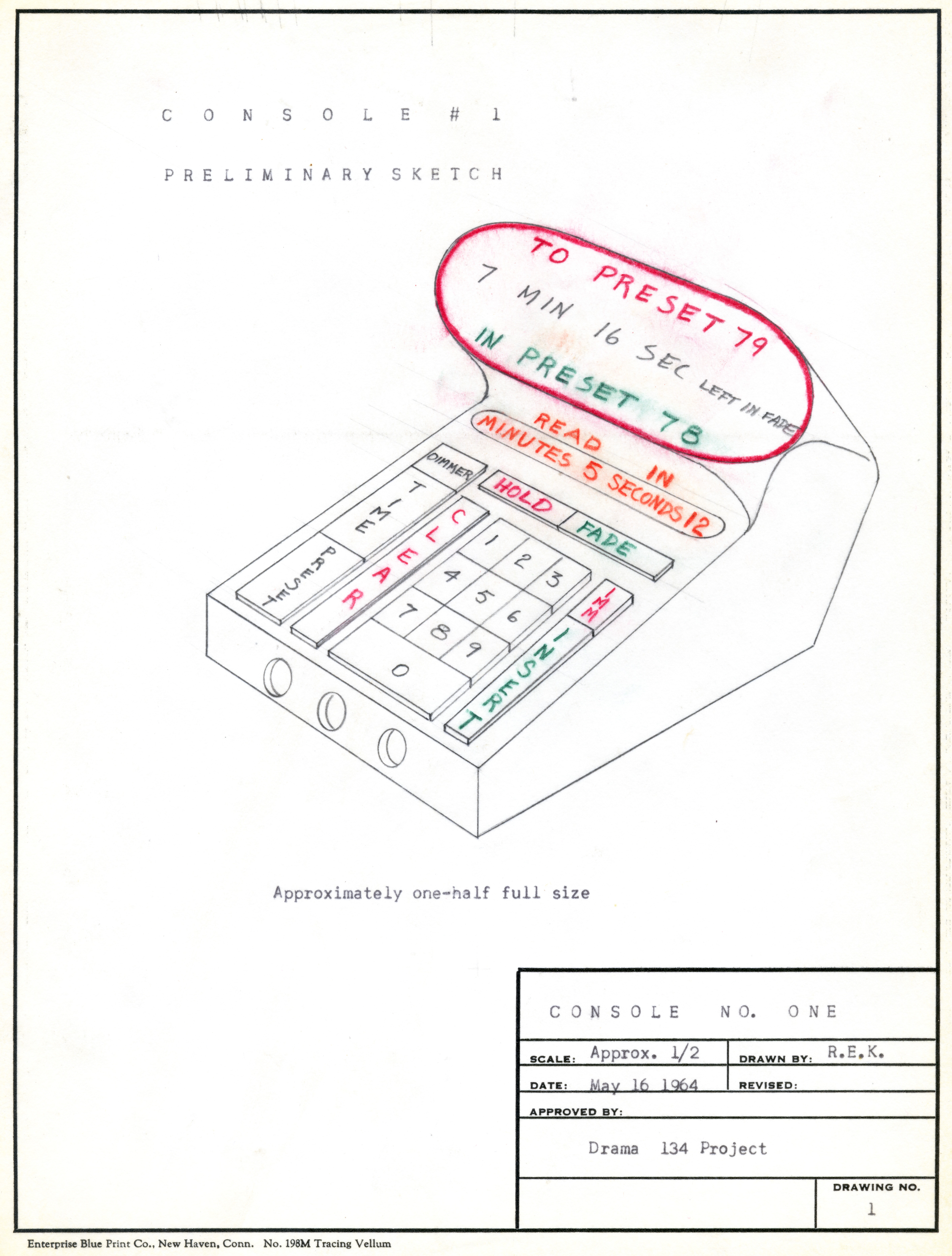
Stanley McCandless, the famous father of modern theater lighting, was the inventor of instruments such as the ellipsoidal spotlight and the author of A Method of Lighting the Stage (1932) in which he introduced what is now called the "McCandless Method" used to this day by lighting designers around the world. As Professor of Stage Lighting at Yale he taught many famous lighting designers and engineers including such greats as Tharon Musser and Jean Rosenthal.
In 1964 I was a student of Professor McCandless in the Drama School at Yale. While taking his class, I invented a series of unique computer-controlled lighting systems (several of which were based around magnetic tape storage of presets). One of these I called the "Time to Go Fader" because the lighting designer could record the desired duration of a fade from one preset to the next during rehearsal and the console would automatically produce a smooth fade over the desired duration. Further, during rehearsal the lighting technician could press a button to automatically record time stamps at several points of dialogue during the fade. Then, if an actor dropped some lines or inserted something extraneous, the console operator could simply punch in the time stamp and the fader would automatically correct the fade duration to smoothly end at the right point in the script.
At the time, Stanley was a consultant for Century Lighting Company in California, one of the two major manufacturers of lighting equipment for the theater and for motion pictures. Stanley was so impressed with my ideas that he presented them to the President of Century Lighting Company with the thought that they might make it into one of their products. (He also gave me a very nice letter of recommendation!) (As far as I know they never developed the ideas.)
Here is one of the drawings I did for the Kaufman "Time to Go Fader" lighting control system while I was in his class:
